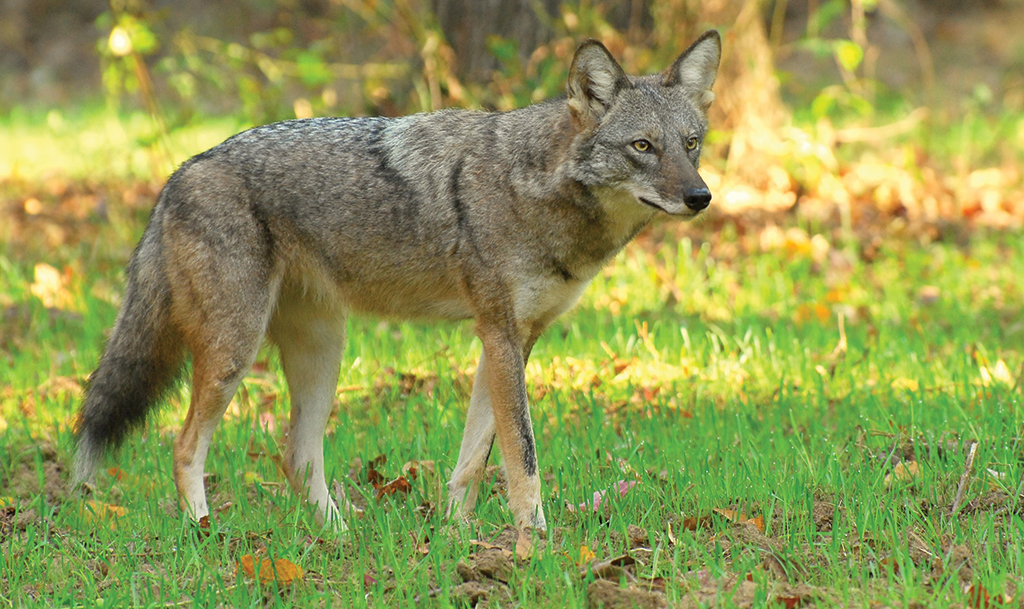
Two of those individuals from mainland Texas had greater than 50% red wolf ancestry estimates. We identified 24 individual coyotes from Galveston Island and 8 from mainland Texas with greater than 10% red wolf ancestry. We collected 203 fecal samples from Galveston for a more in-depth analysis of this population to identify the amount of red wolf ancestry present and potential mechanisms that support retention of red wolf ancestry on the landscape. In 2018, a genetic study identified individuals on Galveston Island, Texas with significant amounts of red wolf ancestry. Red wolves were considered extirpated from the wild by 1980, but before they disappeared, they interbred with encroaching coyotes creating a genetically admixed population of canids along coastal Texas and Louisiana. The red wolf ( Canis rufus) is a critically endangered wolf endemic to the eastern United States, where all extant red wolves are descended from 14 founders which has led to elevated levels of inbreeding over time. Yet hybridization can also be an adaptive management tool if rare populations are inbred and have reduced genetic variation, and there is the opportunity to enhance genetic variation through hybridization. © 1993-1995 Microsoft Corporation.Hybridization can be a conservation concern if genomic introgression leads to the loss of an endangered species’ unique genome, or when hybrid offspring are sterile or less fit than their parental species. All rights reserved.Ĭoyote," Microsoft® Encarta® 96 Encyclopedia. The parents, which are sometimes lifelong mates, feed and care for the pups until fall.Īlan Lane/Oxford Scientific FilmsBBC Natural History Sound Library. It lives in a burrow where, in spring, six or more pups are born after a gestation period of 60-63 days. It feeds mainly on rodents and hares but also eats carrion and most types of animal and vegetable matter. Noted for its nightly serenades of short yaps and mournful howls, the coyote is primarily nocturnal and hunts alone or in relays, running tail downward and sometimes attaining a speed of 64 km (40 miles) per hour. There is, however, considerable local variation in size and colour. The fur is long and coarse and is generally grizzled buff above and whitish below, with reddish legs and a bushy, black-tipped tail. Smaller and more lightly built than the wolf, the coyote stands about 60 cm (24 inches) at the shoulder, weighs about 9-23 kg (20-50 pounds), and is about 1-1.3 m (3.3-4.3 feet) long, including its 30-40-centimetre tail. Historically, the eastern border of its range was the Appalachians, but the coyote has, during the 20th century, expanded its range, and now can be found in all of the continental United States, occupying the niche formerly held by the wolf. The coyote, whose name is derived from the Aztec coyotl, is found from Alaska south to Costa Rica, and especially on the Great Plains. Coyotes tend to live in smaller groups than wolves, sometimes leading solitary lives until they reach sexual maturity at about two years, and they mate for life.Ĭoyotes also called PRAIRIE WOLF, BRUSH WOLF, OR LITTLE WOLF (Canis latrans), New World member of the dog family (Canidae).

There are more than a dozen subspecies of coyotes ranging throughout North and Central America. Coyotes can weigh between 25 and 60 pounds and are usually gray to light tan in colour, depending on the region.

They are thought to be the most intelligent of the wild canids because they have been able to survive and thrive despite human efforts to exterminate them for hundreds of years. Coyotes are light-boned, rangier in body with longer, narrower jaws and smaller ears and feet. The coyote, Canis latrans, is a wide-ranging animal similar to wolves in some ways but different in others. Despite such persecutions, the coyote has adapted well to environments dominated by humans and is found with regularity in populous areas. An intelligent animal with a reputation for cunning and swiftness, the coyote has been persecuted by humans because of the damage (generally overstated) done by individuals that sometimes prey on domestic or game animals. The coyote hybridizes readily with the domestic dog, the offspring being called coydogs. In some areas it has crossed with domestic dogs and the results are not always easy to distinguish from the original wild animal. Its keen senses and fast speed enable it to live almost anywhere it preys on mice, rabbits, deer, occasionally domestic livestock and even fruit. Smaller than the Timber Wolf and more adaptible to changing conditions, it is able to survive in spite of settlement of much of its former wilderness range. The Coyote, Brush Wolf or Prarrie Wolf still haunts most of North America and it is also on the increase in Long Point Country.

Coyote - Brush Wolf - Little Wolf Coyote - Brush Wolf - Little Wolf Photographer: M.


 0 kommentar(er)
0 kommentar(er)
